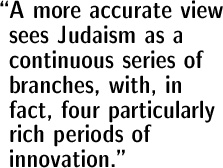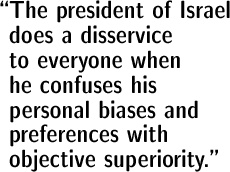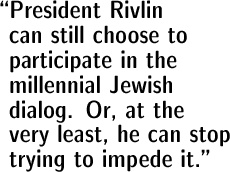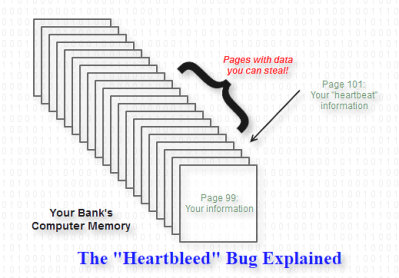Archive
Formulating a Response to the Satmars’ Secret Mass Gathering

Do you support this kind of behavior? If not, say so.
Earlier this month, we now know, the Satmar Jews of Williamsberg conspired to bring thousands of people together in reckless and flagrant violation of COVID safety procedures. A leaked photo of the event confirms a huge mass of people gathering indoors without masks or social distancing of any sort. And a Nov. 11 write-up in Der Blatt, a newspaper closely allied to the Satmars, confirms that organizers purposely concealed the event from “the ravenous press and government officials,” adding that “preparations were made secretly and discreetly.” So there is no doubt that (a) there was a dangerous mass gathering; and (b) organizers schemed to hide it from the public eye. These facts are not in dispute.
My question is what response this demands from Jewish leaders who do not support what the Satmars did.
I and many others have consistently chastised moderate religious leaders who refuse to denounce their more radical factions. An imam who doesn’t denounce a Hizballah suicide bombing, for instance, tacitly supports it, just as a minister who doesn’t denounce the bombing of an abortion clinic in Jesus’ name implicitly approves of it.
So it’s obvious to me that Jewish leaders must speak out, perhaps only briefly, or perhaps at length, if they object to the gathering. To stay silent after such a dangerous event is to endorse it.
To help such a response, here are a few facts:
- The recklessness of this event is unrelated to the recent Supreme Court case that, in effect, invalidated New York State’s capacity limitations on houses of worship, because recklessness does not necessarily involve breaking a specific law. There is no expert in the world who believes that the Satmar gathering was safe.
- This case is unrelated to the Establishment clause of the First Amendment that demands separation of church and state. No one doubts that local building codes apply to churches and mosques and synagogues, for instance, just as everyone agrees that even Kosher caterers must follow FDA safety guidelines. That’s because everyone agrees that government officials are permitted and even required to regulate matters of safety.
- As a matter of Jewish Law, it doesn’t matter if (as I believe) attending a wedding is a luxury, or if (as I think the Satmars may believe) attending a wedding is a commandment. Either way, the commandment of piku’ach nefesh — saving a life — takes precedence, in this case militating against a mass gathering of any sort for any purpose.
- The groom in this case was Rabbi Joel Teitelbaum. He is the grandson of Rabbi Aaron Teitelbaum, who is the Satmar head rabbi and the leader of the Satmar community. Rabbi Aaron Teitelbaum had both the authority and ability to limit attendees in furtherance of piku’ach nefesh. (I hope that he was simply too ignorant to know that COVID is dangerous. I fear that he didn’t care.)
- In October, the New York State health commissioner personally intervened to prevent a similar Satmar wedding planned for the same venue. That October wedding was scaled back, in contrast to this November one. Why, I wonder, could they scale back the first wedding but not this one?
Furthermore, the government’s greatest obligation is to protect its citizens, both reactively and proactively. So I believe that the strongest possible governmental response is called for here, and that the paltry $15,000 that New York City levied on Nov. 23 is insufficient. I also believe that Jewish leaders have an obligation to support the government as it pursues appropriate action against the Satmars.
My own response is this: In spite of the gulf that separates me from the Satmars religiously, politically, and ideologically, I consider them my brothers and sisters. This is why I am so pained by what they did. They hurt me and they hurt themselves. I want to be clear: They do not act in my name and I abhor what they have done. I hope people will not judge me or my community by their actions. And I am sad for the Satmars. They more than almost any other Jewish community should know how good America has been to them. (The Satmars are forbidden to live in Israel.) They are biting the fantastically generous hand that feeds them. To outsiders their ways appear primitive, misogynistic, and even deranged, yet they are afforded all the rights and privileges of citizenship in this country. Local hospitals will treat the Satmars who caught COVID at the wedding, just as local police will protect the cemeteries where they will be buried.
New York City parking laws were even changed to help the Jews celebrate Judaism. The City has welcomed two Jewish mayors. The State vigorously prosecutes acts of antisemitism. And the U.S. has empowered an unprecedented Jewish revival. In return, all the Satmars had to do was not hurt anyone. And, it seems, even that was too much to ask. How did it come to this?
Why Mississippi’s Religious Liberties Law Is More Nuanced Than You Think
 Do you think that a wedding florist should be allowed to deny service to a gay couple just because they’re gay?
Do you think that a wedding florist should be allowed to deny service to a gay couple just because they’re gay?
Do you think that a Jewish photographer should be allowed to refuse photography services to a Neo-Nazi group just because of the nature of that group?
Do you think that a store — on religious grounds — should be allowed to refuse insurance coverage for birth control?
Do you think that an advertising agency — on contrary religious grounds — should be allowed to refuse to help that store’s owners explain their position?
 If you have different answers for these four questions, then you appreciate the complexity of Mississippi’s controversial “Protecting Freedom of Conscience from Government Discrimination Act” (HB 1523), which was just signed into law; of Georgia’s similar “Free Exercise Protection Act” (HB 757), which that state’s governor vetoed; and of similar legislation.
If you have different answers for these four questions, then you appreciate the complexity of Mississippi’s controversial “Protecting Freedom of Conscience from Government Discrimination Act” (HB 1523), which was just signed into law; of Georgia’s similar “Free Exercise Protection Act” (HB 757), which that state’s governor vetoed; and of similar legislation.
Mississippi’s law claims to protect people, and groups of people, who act based on a “sincerely held” belief or “moral conviction” in any of three hotly debated tenets:
- Marriage is only between one man and one woman.
- Sex should be confined to such a one-man-one-woman marriage.
- People have only one gender (“sex”), the biological one with which they were born.
Opponents to the law say it legalizes discrimination against, for example, gay couples.
Proponents counter that it protects religious freedoms.
In my opinion, both claims are right (though that doesn’t mean that I think both sides have equal merit). The Mississippi law generates such vehemence precisely because it pits one cherished American value against another.
In this country we believe in equality before the law. We have already established, for instance, that it’s illegal to set out to hire men instead of equally qualified women, no matter how much an employer may prefer working with men.
In this country we also believe in freedom of religion. We have already established, for instance, that the Church can bar women from certain positions of leadership, no matter how qualified they might otherwise be.
Or to look at it differently, the opponents to Mississippi’s law say that, in this case, equality trumps religious freedom. Proponents say that these religious freedoms trump equality.
And here, I think, is the real issue: when these two supreme values collide, which one do we, as a society, choose? And why?
Unfortunately, the public conversation plays out differently.
Proponents double down, defending their religious position, for instance, that marriage is, was, and always shall be between one man and one women. (I think they’re wrong, but that isn’t the point.) They ignore the fact that similar religious arguments were advanced in the 19th century to defend slavery. And they ignore the fact that even Christian-owned stores are not allowed to discriminate against women, even though the Church is.
Opponents also double down, defending their position, for instance, that a marriage between two men is just as valid as a marriage between a man and a women. They ignore the fact that they might experience supreme discomfort if they had to work in support of the KKK. (The KKK probably takes offense at my position, but that isn’t the point.) And they ignore the fact that laws already permit religious gender-based discrimination.
So I have a challenge:
If you defend this law, why do you think that these particular religious beliefs are more important than equality? That is, how is an anti-gay-marriage stance different than, say, 19th-century pro-slavery religious beliefs or, more generally, other gender-based religious beliefs?
If you oppose this law, why do you think that these particular religious beliefs should be squashed? That is, how is forcing people to support gay marriage different than, say, forcing people to work on their sabbath, or forcing people to support other things they don’t like, such as perhaps, the KKK?
And in the meantime, as we continue to discuss this law, perhaps we can at least tread softly out of respect for people who disagree with us.
President Rivlin’s Tragic Misunderstanding of Jewish History (Or, Will the Original Judaism Please Stand Up?)
The current president of Israel rejects Judaism as practiced by most of the world’s Jews.
Already, that is an unfortunate state of affairs. But what makes it worse in my opinion is that the president’s narrow-minded beliefs are based in misunderstanding and are the result of (probably inadvertent) brainwashing.
According to the JTA, President Reuven Rivlin told the Knesset in 2006 that “the status of Judaism according to halachah [Jewish law] is what has kept us going for 3,800 years. Besides it there is nothing.”
He is factually incorrect in many ways.
 To start, halachah was born after the Jewish exile in the year 70, so it is, at most, 1,944 years old, not 3,800. Judaism did just fine without it for about a millennium, when Jewish service to God took the form of animal sacrifice. The enactment of halachah was a reformation of Judaism, or, as we call it more colloquially, part of a reform movement.
To start, halachah was born after the Jewish exile in the year 70, so it is, at most, 1,944 years old, not 3,800. Judaism did just fine without it for about a millennium, when Jewish service to God took the form of animal sacrifice. The enactment of halachah was a reformation of Judaism, or, as we call it more colloquially, part of a reform movement.
In fact, most of modern Judaism’s public symbols — thrice daily prayer services, Sabbath candles, current dietary laws (“keeping kosher”), the familiar matzah, etc. — didn’t exist 2,000 years ago. They were all reforms.
President Rivlin’s gross misunderstanding of the history of the country that just elected him might be forgiven — after all, he’s a politician, not an historian — except that he chose to present his revisionism before the Knesset, and continues to promulgate it in his official capacity.
President Rivlin, like many people, is suffering from a double misunderstanding. He thinks that Judaism has never changed. And he thinks that Orthodoxy is more authentic than its alternatives. In other words, President Rivlin wrongly thinks of Judaism as a straight line from antiquity to modern Orthodoxy, with deviations shooting off from time to time in the wrong directions.
 A more accurate view sees Judaism as a continuous series of branches, with, in fact, four particularly rich periods of innovation.
A more accurate view sees Judaism as a continuous series of branches, with, in fact, four particularly rich periods of innovation.
Two examples demonstrate. The first concerns travel on the Sabbath, the second, the ceremonial skullcap commonly called a yarmulke or kippah.
Jewish law used to forbid travel on the Sabbath. Then transatlantic ships were invented, and Jews had a choice: they could refuse to travel from continent to continent (because the lengthy journey necessarily included the Sabbath). Or they could update their laws. They chose the latter, retaining only a nod to tradition in the form of not embarking or disembarking on the Sabbath.
A detail is equally to the point: The Shulchan Aruch — the 16th-century authoritative compendium of Jewish law — prohibits setting out to sea within three days of the Sabbath (Orech Chaim 248). The reasoning there was that the Sabbath shouldn’t be marred by the discomfort and confusion that accompany the start of an ocean voyage. But even modern Jews who follow halachah break this aspect of Jewish law.
The second example is the kippah or yarmulke. Common perception is that Jews are always supposed to wear a kippah in public. But, in fact, it wasn’t until the 16th century (in the same Shulchan Aruch) that the wearing of a kippah was codified. Before that, the 12th-century Maimonides ruled that a Jew’s head should be covered only during prayer. For most of Jewish history, Jews did not wear a kippah in public.
 These two examples show that modern Orthodoxy sometimes ignores old laws and sometimes invents new ones. That’s fine, of course, and my point here is not to belittle Orthodox practice. But, equally, let us not believe that only progressive Judaism purposely changes the past, or that Orthodoxy most closely resembles what used to be. In this case (by chance), the progressive practice of donning a kippah for worship services is older than the revisionist Orthodox pattern of wearing one all the time.
These two examples show that modern Orthodoxy sometimes ignores old laws and sometimes invents new ones. That’s fine, of course, and my point here is not to belittle Orthodox practice. But, equally, let us not believe that only progressive Judaism purposely changes the past, or that Orthodoxy most closely resembles what used to be. In this case (by chance), the progressive practice of donning a kippah for worship services is older than the revisionist Orthodox pattern of wearing one all the time.
But the details are only important here because of the larger pattern they demonstrate: Judaism has constantly evolved. The president of Israel does a disservice to everyone when he confuses his personal biases and preferences with objective superiority.
As it happens, Judaism has seen four particularly productive periods of innovation (as I point out in one of my most popular presentations, “Four Exiles and Four Spiritual Revolutions”). The prophets revised Judaism, broadening Jewish attention beyond the Jewish community. The Rabbis invented halachah. And the Kabbalists created a unique form of Jewish mysticism, to say nothing of the bulk of the Friday evening worship service.
 We are witnessing the fourth major period of Jewish innovation in 3,000 years. Contributing to it are formal movements like Reform, Conservative, and Reconstructionist; philosophical approaches like Modern Orthodoxy; organizations like Chabad; populist movements that define many mainstream Israelis; and more. I am convinced that historians someday will look back at the 21st century with the same awe and reverence with which we now view the eras of the biblical prophets and the Rabbis.
We are witnessing the fourth major period of Jewish innovation in 3,000 years. Contributing to it are formal movements like Reform, Conservative, and Reconstructionist; philosophical approaches like Modern Orthodoxy; organizations like Chabad; populist movements that define many mainstream Israelis; and more. I am convinced that historians someday will look back at the 21st century with the same awe and reverence with which we now view the eras of the biblical prophets and the Rabbis.
It is a privilege to live through this incredibly exciting time.
And the president of Israel is being left behind. But it’s not too late. President Rivlin can still choose to participate constructively in the millennial Jewish dialog. Or, at the very least, he can stop trying to impede it.
The Heartbleed Bug Explained in Non-Technical Language
 I’ve been asked by a lot of people to explain the “heartbleed” bug in non-technical terms. It’s really not complicated.
I’ve been asked by a lot of people to explain the “heartbleed” bug in non-technical terms. It’s really not complicated.
There are two parts to understanding what’s going on.
The first part is how computer memory works.
Computer memory is like a book of pages made from magic slates or mini whiteboards. Anything can be written on any page, and every page can be erased and overwritten with something new. The pages go in order, but the information doesn’t have to, which is why the computer constantly updates a changing table of contents to keep things straight.
For example, when you connect to, say, one of your bank’s computers to pay your bills online, that computer has to keep track of your name, your account number, your password, etc. So it puts all of that on whichever page is convenient — call it page 99 — and also makes a note in the table of contents so it knows where your information is.
The second part of understanding the heartbleed bug is knowing about an obscure part of the way computer connections work.
When your computer (or phone, or whatever) connects to your bank’s computer, you want to make sure that no one except you and your bank have access to the information you’re sending back and forth, like your password or your account balance. To make this possible, your computer and the bank’s computer work out what is essentially a brand new secret code, and use that to create what’s called a “secure connection.”
This process of negotiating a code is slow, so if you’re sending a lot of information back and forth (which you almost always are), you want a way of indicating that whatever you’re sending is part of an ongoing conversation. In other words, instead of creating a new code each time you type something or click on something on your bank’s website, you want some way of indicating that you want to keep using the code you have.
The mechanism for keeping a code active is called a “heartbeat,” and it’s pretty simple. You send an encoded message, and the other side decodes it and sends it back. It’s like you keep saying, “prove that you understand our secret code.” Because this is a code that you and your bank just created, no one else has it, so this is a pretty reliable system.
Of course, your bank’s computer has to write down your message on one of its pages. Let’s say it picks page 101. It writes down the message, then sends you page 101.
To make things even more secure, you get to choose how long your heartbeat message is. It might be one page. Or it might be 64 pages. If it’s 64 pages, the bank’s computer writes the whole thing down and sends back all 64 pages.
And here we come to the heartbleed bug: The way they programmed this thing, the computer at the other end doesn’t check if you sent as much as you said you did.
So if you say you’re sending 64 pages and only send one page, the computer will write down your message on page 101, but send you back pages 101-164. This means that you’ll get 63 pages of other people’s stuff!
And this could be anything. It could be someone else’s account balance. It could be someone else’s password. It could be someone else’s PIN number for their ATM.
But none of those are the worst case scenario. The secret codes that make secure communication possible all depend on keeping special keys (as they’re called) secret. Here the details really are complicated, but the bottom line is that the security of the Internet depends on the secrecy of these keys
Your bank — and only your bank — has one of the keys, which is why you can trust your on-line banking. But if that key just happens to be on page 102-164, which you just stole, you can pretend to be your bank!
This means that even once the bug is fixed on your bank’s computer, you can’t know for sure if you’re sending your information to your bank, or to a guy in Africa who’s robbing you blind.
In short, because the heartbleed bug reveals random pages in otherwise-secure computers, it’s not hard for malicious computer users to grab your private information and to grab the secret keys that will let them masquerade as a site you trust.
What’s the Deal with the Camels in the Bible?
 So far this week, the New York Times and Time Magazine, among many other usually respectable news outlets, have reported on scientific evidence that camels weren’t domesticated until about the 10th century BCE. That’s true.
So far this week, the New York Times and Time Magazine, among many other usually respectable news outlets, have reported on scientific evidence that camels weren’t domesticated until about the 10th century BCE. That’s true.
They add that this is a problem for the Bible because Abraham and the other patriarchs, who owned camels, lived much earlier. This part is wrong. And it demonstrates a pretty surprising naivete on the part of these and other mainstream news organizations.
First of all, let’s be clear. According to Genesis, Abraham lived to be 175 years old, so it’s not the camels that are hard to explain.
But the real misunderstanding is demonstrated by this line from the New York Times: “Abraham, Jacob and Joseph […] lived in the first half of the second millennium B.C.” No they didn’t.
As I’ve explained in detail in And God Said — and summarized on-line for the Huffington Post (“The Bible Isn’t The History You Think It Is“) — the Old Testament is divided into three sections: the creation of the world (Adam up to Abraham’s father Terah), the creation of the Israelites (Abraham to Moses) and life in Jerusalem (after Moses). Only the third part was meant as history. The first two parts — Adam, Noah, Abraham, Joseph, and all the rest — serve other purposes.
So Abraham didn’t live in the first half of the second millennium, just like the heroine in Song of Solomon didn’t have birds for eyes, in spite of the poetic line in verse 4:1 that her “eyes are doves.”
Though I’m regularly surprised that so much misinformation surrounds the Bible, this kind of widespread mistake does help explain why many scientists don’t appreciate the Bible’s value, and why many religionists increasingly have no use for science.
Remembering Ariel Sharon: A Real-Life Hero
Ariel Sharon died today.
It was eight years ago that a stroke left the prominent Israeli leader in a coma, and about two weeks ago, while I was in Israel, that news reports circulated that Sharon’s condition had “worsened.”
In a sense, it was ludicrous. How much worse could the comatose 85-year-old’s health get?
In another sense, it didn’t even seem like news. Except to those who knew him personally, what did it matter, really, whether the man was in a permanent vegetative state or whether his kidneys and liver gave up, too? But it wasn’t just news. It was the lead story across Israel.
Ariel Sharon lived a life of controversy. Born in 1928 in the pre-Israel British Mandate of Palestine E.I., he joined the Israeli army as a paratrooper, achieved officer status, and distinguished himself militarily by, for instance, forming the elite Unit 101 of the IDF and by mounting successful if contentious operations during the 1956 and 1973 wars. For these the public dubbed him the “King of Israel” and the “Lion of God,” launching his political career.
Sharon’s military boldness was matched by his bullheaded personality, at attribute for which he was called “the Bulldozer.” Reports of military insubordination had already surfaced in the 1950s. Later, for his actions as Defense Minister during the 1982 Israeli military campaign in Lebanon, he was charged with personal responsibility for Muslim deaths at the hands of Lebanese Christians. Unlike most such accusations, this one came not from Israel’s critics but from the Israeli government itself.
Repeating his pattern of provocation, Sharon led a contingent of 1,000 Israeli Jewish police offers to the Temple Mount in September of 2000, all but ensuring a violent response from the local Muslims who considered the site the 3rd holiest place in Islam.
In 2001, Sharon became Israel’s Prime Minister, thus giving his argumentative personality a larger pulpit, such as when he enraged all of France by declaring that French Jews should leave immediately because of the rampant and unchecked antisemitism in that country.
In 2004, he made an everlasting contribution to a 3,000 year-old struggle when he led his government to a unilateral disengagement from the occupied Gaza Strip (biblical Philistia, where David slew Goliath). Sharon’s move was met with widespread disapproval. Many Palestinians accused him of refusing to negotiate, while many of the Israelis living there refused to leave peaceably.
Yet Sharon’s autobiographer David Chanoff also reports that the leader said of his own life that “I begin with the basic conviction that Jews and Arabs can live together” and that even though Israel should remain Jewish, “Arabs should … be full citizens in every sense of the word.”
By 2005, this side of Sharon had become more widely recognized. He resigned as head of the Likud party, which he himself had founded, and established a new party, which he called “Kadima” — a Hebrew word that means “forward,” and also, more colloquially, “let’s go already.” It was in this context that he was widely seen as Israel’s greatest hope for permanent peace.
And then he suffered a series of debilitating strokes that left him in a coma, that left his party without a strong leader, and that devastated the spirits of many newly-made optimists.
Flawed though he was — as real-life heros always are — Sharon was larger then life, and he wrote a chapter of a book that began 150 generations ago. Yet alongside monikers like “King of Israel,” he was also known by his humble nickname: Arik.
Perhaps this Jew born to Russian immigrants can remind us that our own lives, too — in ways we often cannot fathom — are part of the unfolding story of the Jewish people. Now there’s a new chapter waiting to be written. And each of us has been invited to contribute.
Why Hanukkah and Thanksgiving will Never Again Coincide
[You can also read a version of this on the Huffington Post.]
 Try to keep up with me on this.
Try to keep up with me on this.
I know that’s an ominous way to start, but it’s worth it.
This month, Hanukkah and Thanksgiving will overlap for a joint celebration that will never happen again. Here’s why.
Thanksgiving is the 4th Thursday in November. Hanukkah is the 25th day of the Jewish month of Kislev.
The 4th Thursday in November can range from the 22nd to the 28th. If the 29th is a Thursday, then so is the 1st, so the 29th would be the fifth Thursday, not the fourth. And if the 21st is a Thursday, then it’s only the third Thursday. On average, then, Thanksgiving falls on the 28th about every seven years. It will fall on the 28th this year, then again in 2019, 2024, 2030, and 2041, or four times in the next 28 years. (It’s not exactly every seven years because leap days throw things off a little.)
The Jewish month of Kislev can currently start as early as November 3 or as late as December 2, which means that the first day of Hanukkah can come as early as November 28 or as late as December 27.
The reason for the broad range of possible dates is that the Jewish calendar is lunar-solar. The months are based on the cycles of the moon. But the calendar changes the lengths of those months, and even how many months are in a year, to make sure that Passover always falls in the spring. This complex system — put in place by Rav Shmuel in the first half of the first millennium CE — ensures that the Jewish date and the secular date match up every 19 years. (By contrast, the Muslim calendar is purely lunar, which is why Ramadan can fall during any time of the solar year. The Christian religious calendar is almost entirely solar, but Easter falls on the first Sunday after the first full moon after the spring equinox [around March 21], a calculation that involves the moon as well as the sun.)
Because of this Jewish 19-year cycle, 19 years from now, in the year 2032, Hanukkah will again fall on November 28. But Thanksgiving in that year falls three days earlier, on the 25th.
On average, we would expect the 19-year Jewish cycle and the 7-year Thanksgiving-on-November-28 cycle to coincide about every 19×7 years, which is to say, approximately every 133 years. And they sort of do.
One-hundred and fifty-two years ago, in 1861, the first day of Hanukkah and the 4th Thursday in November were both on November 28th. But there was no Thanksgiving back then.
In 152 years from now, in 2165, Thanksgiving falls on the 28th, and you’d expect Hanukkah also to fall on the 28th, but it doesn’t.
If you you’ve been paying attention (and if you haven’t given up yet), you may have noticed that I said “currently” when I explained when Kislev can begin. Remember Shmuel, who fixed the details of our current Jewish calendar in the first place? He, like everyone else back then, though that the year was 365.25 days long. This is why we have a usual year of 365 days, but every 4th year we add a leap day in February to make 366.
But Shmuel — again, like everyone else — was off by a little more than 11 minutes. The year is not quite 365.25 days long, but, rather, closer to only 365.2425 days, or about 11 minutes shorter than 365.25 days. For a long time no one noticed those 11 minutes. For a longer time no one cared. But by the time of Pope Gregory XIII in 1582, those 11 minutes per year — or about 3 days per 400 years — had added up to about ten days.
This meant that March 21, which had once been the approximate date of the spring equinox, was now 10 days later than the spring equinox. Or, conversely, the spring equinox fell on March 11. This was a problem for the Church, because the springtime holiday of Easter was shifting further and further away from spring.
Pope Gregory fixed the problem in two ways. First, he lopped off 10 days from the calendar. For Catholics, the day after Thursday, October 4, 1582 was Friday, October 15, 1582. Secondly, he eliminated 3 leap days every four hundred years. He decreed that years divisible by 4 would still be leap years, unless they were also divisible by 100 but not by 400. So 1600 would be a leap year (divisible by 100 and by 400), but 1700 would not (divisible by 100 and not by 400). This became known as the Gregorian calendar, and it gradually spread through the Christian world.
In 1752, the British empire adopted the Gregorian calendar, making the day after Wednesday, September 2, 1752 not the 3rd but rather the 14th. (An 11th day was necessary because 1700 was not a leap year in the Gregorian calendar.)
The Jews, of course, didn’t give a damn what Pope Gregory said. They kept using the Shmuelian calendar for their calculations. The Shmuelian calendar and the Gregorian calendar have been diverging at the rate of about 11 minutes a year, or 3 days every 400 years. Furthermore, the year 2100 will be a leap year in the Shmuelian calendar (because it’s divisible by 4) but not in the Gregorian calendar (because it’s divisible by 100 but not 400). So not long after the year 2100, the Jewish calendar and the secular calendar will diverge by an additional 1 day — though the details are even a little more nuanced, because Shmuel used a simplification of the final Jewish calendar.
This is why (remember the question from several paragraphs ago?) in the year 2165, when we’d expect Thanksgiving and Hanukkah to coincide again, Hanukkah will actually be one day later.
And that is why Thanksgiving and Hanukkah will never again coincide.
Well, almost never. If the Jews don’t ever abandon the calculations based on the Shmuelian calendar, Hanukkah will keep getting later and later — moving through winter, then into spring, summer, and finally back into fall — so that tens of thousands of years from now they will again coincide. But long before then the springtime holiday of Passover will have moved deep into summer, so be on the lookout for a memo with a calendar update in the next several thousand years.
And in the meantime, don’t miss this opportunity to enjoy an exceedingly rare confluence of celebrations.
Happy Hanukkah. And Happy Thanksgiving.
There are Strange Things Done in Washington
There are strange things done in Washington
By the folks who forge our laws.
The Senate halls and quorum calls
Have always had their flaws.
So now and again our leadership train
Has followed a curious trail.
But today’s the day you’d be tempted to say
That the train has jumped the rail.
Now on normal days the political frays of our leaders make the news
‘Cause they can’t agree down there in D.C. on which of the points of views
That get expressed will help us best restore our fortune. And
Help us regain our world-wide fame as a free and prosperous land.
On one side they say that the only way to bring us out of our slump
Is to spend much more than we have before, to find new ways to pump
Vast new sums of government funds into every corner and niche
Of our fiscal machine — you know what I mean — that’s the way to unleash
The economic might that’s been hidden from sight since four or five years ago
When the banks were dethroned for offering loans to every Tom, Harry, and Joe.
In retrospect they perhaps should have checked, before they dolled out these funds,
If there was a way for debtors to pay the interest and principal sums
Back to the banks who have since joined the ranks of the utterly stupefied.
“We couldn’t have known when we made that loan,” is what they all have cried.
“Just relax. Get off our backs,” they say. “And we’re still annoyed
“That you bitch and moan about those loans that we made to the unemployed.”
But though it’s bizarre we are where we are and that’s the reason for
The folks in D.C. to search for a key to unlock our riches of yore.
And as I have said there’s a mainstream thread in the magical beltway cult
That thinks that more debt is our best bet for a prosperous fiscal result.
But opposing them are a group of men who mightily disagree
Their position is that we’ve had our at-bat and swung and missed for strike three.
The government can’t be the power plant that supplies the fiscal fuel
To help us reclaim our former fame as an economic Jewel.
No, they say. The only way to restore our former wealth
Is to ease the restraints on the patron saints of global fiscal health.
By that they mean the mighty machine of businesses large and small
Whose inherent greed is just what we need to bring prosperity back to all
The American folks who may have lost hope as they saw their fortunes shrink.
Though it might be true that business is who brought us to the very brink
Of financial wreck — Sure! What the heck! — Let’s give them another shot
At creating a tide upon which we all rise. That’s the other school of thought.
Now it seems to me that these folks in D.C. have spent too long at the farm.
Both theories are flawed, and that’s not all, they’re both more likely to harm
This great U.S., whose very success has always depended upon
A collective desire to climb ever higher, to forge new paths, to lead on.
But now I digress, so let me just stress that surely there’s truth on both sides
Of this mighty debate about our fate. There’s more that unites than divides.
We can all admire the way we aspire to freedom that’s guaranteed
By the very core of our national lore, by the leaders ensconced in D.C.
This explains our awe for order and law, for the forces that keep us free
To visit great parks, to enjoy the arts, to relax over afternoon tea.
‘Tis been said before, but I’ll say it once more: Anarchy precedes every fall.
But nonetheless, it’s true, I guess, that it beats no government at all.
There are strange things done in Washington
By the folks who forge our laws.
The Senate halls and quorum calls
Have always had their flaws.
So now and again our leadership train
Has followed a curious trail.
But today’s the day you’d be tempted to say
That the train has jumped the rail.
Jerusalem through CNN’s Eyes of Bias, Prejudice, and Malice
I wasn’t going to say anything, but when CNN started featuring their misguided article about Israel, the West Bank, and Gaza, I felt I had to speak up, because the piece reads like a deliberate attack in the guise of journalism.
The network has a series called “Parts Unknown.” To promote the first episode of the second season, CNN has posted 10 things to know before visiting Israel, the West Bank and Gaza by Matthew Teller, writing “for CNN.”Everyone has a bias. And hard facts will always be open to soft interpretation in anything as complex as a modern country, particularly one continuing an evolving 3,000-year-old culture at the crossroads of three major world faiths. I’ve written about Jerusalem, for example, and presumably some people didn’t like what I wrote.
 So I’m not surprised that CNN’s author highlights the connection between the Quran and the Muslim Al-aqsa mosque even though he omits the Bible’s many references to the Jewish Temple. Nor am I surprised by the author’s claim that the Israeli security barrier was “built to keep Palestinians from moving freely.” I don’t believe it was, and I believe that the author’s spiteful words hinder serious conversation about the unintended consequences of battling terrorism. But still, we might attribute these shortcomings to editorial voice on his part.
So I’m not surprised that CNN’s author highlights the connection between the Quran and the Muslim Al-aqsa mosque even though he omits the Bible’s many references to the Jewish Temple. Nor am I surprised by the author’s claim that the Israeli security barrier was “built to keep Palestinians from moving freely.” I don’t believe it was, and I believe that the author’s spiteful words hinder serious conversation about the unintended consequences of battling terrorism. But still, we might attribute these shortcomings to editorial voice on his part.
The factual mistakes are more troubling, like the author’s indication that the Western Wall was part of the Temple (it was and is the western retaining wall that supports the Temple Mount upon which the Temple was built), or his mistaken explanation that Judaism is simply a religion (contradicting, for example, the eminent Rabbi Ammi Hirsch). These are common mistakes, though, noteworthy only because CNN is promulgating the misinformation this time.
The real problem with these “10 things” is the ninth one, where the author apparently confuses the Palestine of antiquity with the modern Palestinians. “When you visit Israel,” he writes as a caption, “you’re also visiting biblical Palestine.” “Palestine” is one ancient name for the area that includes Jerusalem, so “biblical Palestine” is almost right. But Teller then takes the shocking step of using modern “Palestinian culture and the Arabic language” as an example of Israel’s biblical culture.
There is lots of legitimate room for disagreement when it comes to the Middle East. But no one of repute believes that the ancient, Jewish, Israelite inhabitants of ancient Palestine are the same as the modern Christian and Muslim Arabs who call themselves Palestinians. They just happen to have the same name in English. There is no reasonable justification or excuse for equating the two. Yet that’s what CNN does here.
There’s an old adage that one should never attribute something to malice if it can be explained by ignorance, so along with any other reader who cares about the Middle East, I have to ask: is CNN’s gross bias here born of prejudice or ignorance?
[In the interest of open debate, I have offered an opportunity to respond to the author, Matthew Teller, and to Anthony Bourdain, whose name appears in connection with the article.]
Chasing Mediocrity
I think that mediocrity is easy to measure while excellence is not, which creates a dilemma in the current era of objective assessment: when we insist on objective metrics of success — grades (for children), evaluations (for teachers), quarterly profits (for companies), recognized rules of writing (for authors), etc. — we motivate people to chase mediocrity.
For example, high schools in this country have been on a steady path toward more objective standards (starting with “No Child Left Behind”), while university professors, once they achieve tenure, are essentially accountable to no one. As a result, I believe, U.S. high schools fare terribly compared to the rest of the world, while our universities are arguably second to none.
Indeed, Forbes reports that “70% of engineers with PhD’s who graduate from U.S. universities are foreign-born.” These engineers come to the U.S. only for the education system that has no objective metrics of success, and, similarly, U.S. high-school students are unprepared for graduate work after their educational path based on test scores.
In the completely different realm of fiction, best-selling author Lee Child critisizes the writing industry for focusing on objective criteria of good writing, starting with the most well-known rule: “show don’t tell.” Writers follow the rule, Child says, because they’ve been “beaten down.” They are chasing mediocrity.
The now-defunct Bell Labs had a well funded department of researchers whose only job was to tinker; they were not required to demonstrate that they were earning their salaries. The department developed the transistor, the solar cell, the laser, and the first communications satellite, among many other innovations. Freed of objective metrics of success, the researchers were able to thrive.
The highly coveted MacArthur “genius” grants, officially the “MacArthur Fellowship” stipends, come with no strings attached and make no reporting obligations on the fellows, because, the foundation believes, the fellows “are in the best position to decide how to allocate their time and resources.” They don’t want to push their fellows toward mediocrity.
The catch is that I think there’s a place for mediocrity, because sometimes the alternative is ineptitude. Or to look at it differently, “mediocrity” is sometimes “competence.”
I’d rather have a mediocre airplane pilot than an inept one, for instance, so I’m glad the FAA requires (14 CFR 121) pilots to undergo “check rides” to demonstrate their continuing competence.
So we seem to have two approaches: an objective-assessment model that pushes people from ineptitude up to competence, but also pushes people down from excellence to mediocrity; and a more flexible model that allows people to excel but also to fail.
The trick, I suspect, is knowing when to apply each one.




